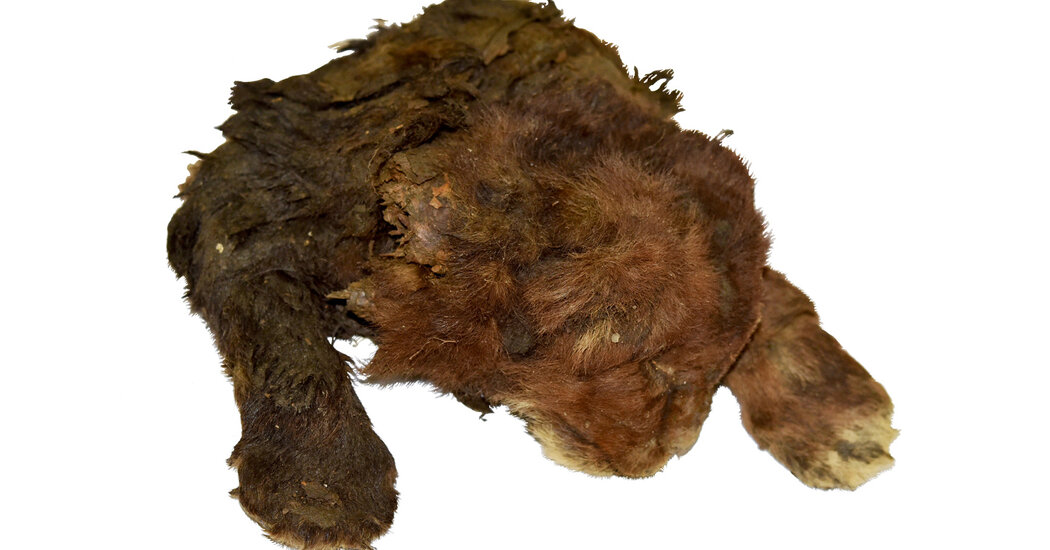The Homotherium cub was preserved in Siberian permafrost with its dark fur and flesh intact.
In 2020, prospectors seeking mammoth tusks in eastern Siberia found a bundle of fur protruding from the icy bank of the Badyarikha River. The diggers knew they were looking at something rare: the Ice Age mummy of a cat cub.
Scientists have studied mummified animals that roamed the steppes in the Pleistocene 30,000 years ago. That includes titans like mammoths and woolly rhinoceros, as well as small mammals like the cubs of wolverines and cave lions. But when the prospectors brought their little find to the Russian Academy of Sciences in Moscow, researchers there were delighted: They had just been handed the first-ever mummy of a saber-toothed cat.
The find, published on Thursday in the journal Scientific Reports, is the first time in 28,000 years that humans have laid eyes on a saber-toothed cat — at least since their extinction at the end of the ice age.
“Many paleontologists working with felids, including myself, have been hoping for decades to see a frozen saber-tooth felid from the permafrost,” said Manuel J. Salesa, a specialist in saber-toothed cats at the Museo Nacional de Ciencias Naturales in Madrid who was not involved in the paper. “This amazing find is one of the most exciting moments of my career.”
It is also the first discovery of a Pleistocene mummy from a family of animals with no surviving species, said Alexey Lopatin, a paleontologist at the Russian Academy of Sciences and an author on the paper.
Using CT scans to examine the cub’s bones, Dr. Lopatin and his colleagues confirmed that the 37,000-year-old mummy was a Homotherium, a rangy, lion-size cat with long forelimbs and heavy shoulders. The species was the last of the saber-toothed cats, which occupied a branch on the tree of life distinct from modern felines.
